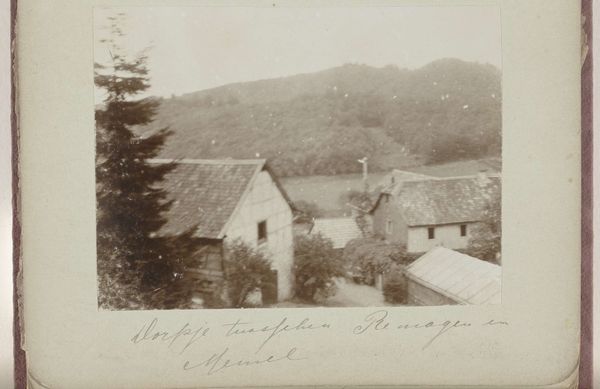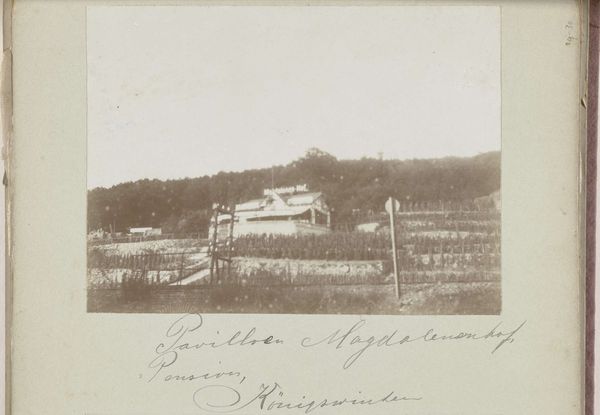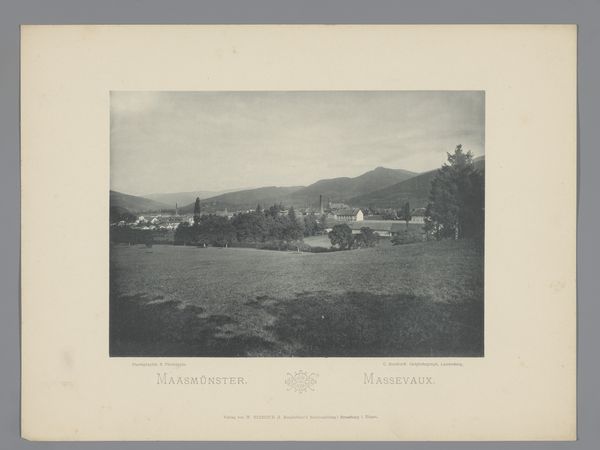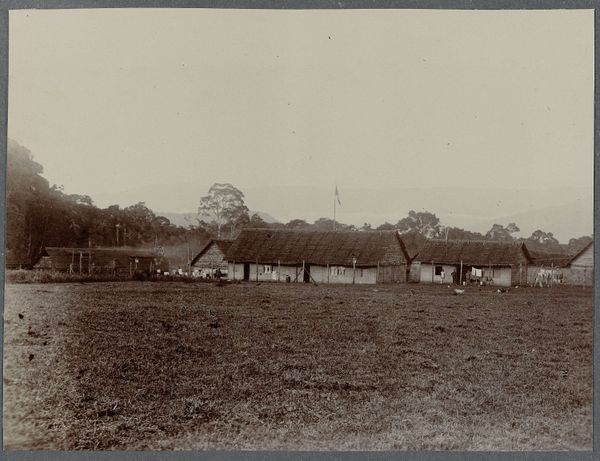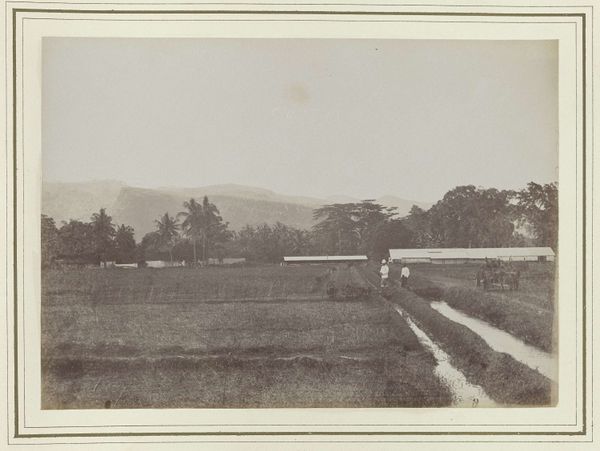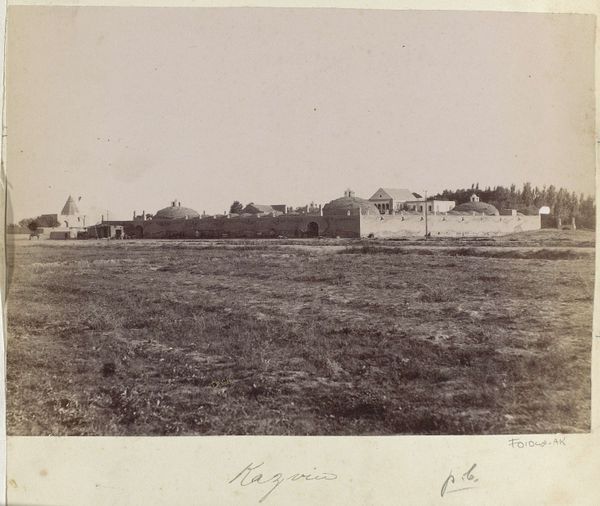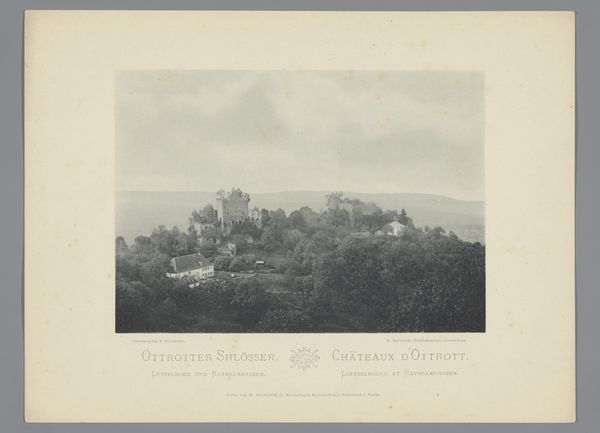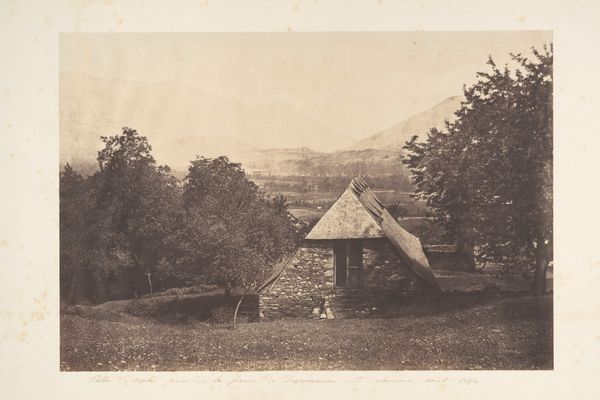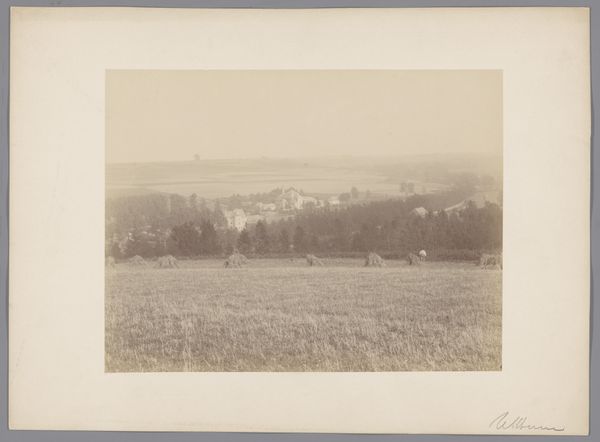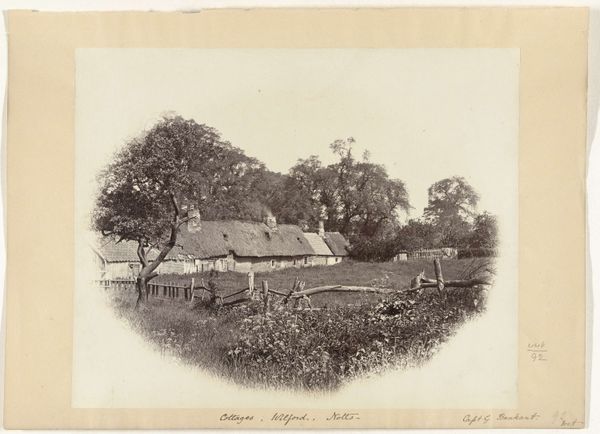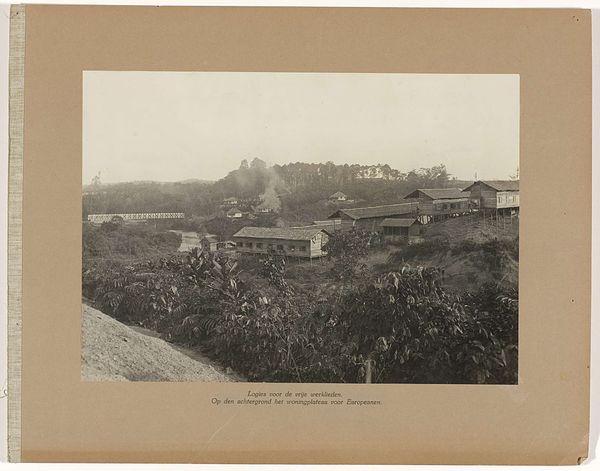
Dimensions: height 86 mm, width 116 mm
Copyright: Rijks Museum: Open Domain
Editor: Here we have David Vermeulen's "Gezicht op de Drachenfels en de Drachenburg," a gelatin-silver print made somewhere between 1895 and 1905. There's such a hazy, almost dreamlike quality to it, it’s pretty different from some of the crisper landscapes I've seen. What strikes you about this photograph? Curator: Considering the gelatin-silver print, we should think about its emergence in the late 19th century. How did mass production and industrial chemistry change photographic practices? Before, photography was messy and complicated! This technology democratized the medium and enabled greater accessibility and production speed, changing the perception of both art and the labour required. Editor: So the romanticism of the image might clash with its industrialized production? Curator: Precisely. This Pictorialist photograph pretends it is hand-crafted because it references romantic landscape paintings but the reality is that Vermeulen used a new technology available to many due to mass manufacture. We should be considering the labour needed to make something look painterly with something that should make reproducible images? What commentary can we see emerging through that tension? Editor: That’s interesting. So, is the subject – the Drachenfels and Drachenburg – less important than the act of *making* the photograph? Curator: It isn't irrelevant. Photography, even pictorialist photography, became entwined with capitalism as photography became more linked to advertising, science and mass media.. This one has some element of craft though and challenges where one type of artistic skill ends and another begins. The key thing is thinking about photography's changing position in relation to commerce, leisure and even how science began exploiting photographic imagery as records. Editor: I see what you mean. The context of its creation gives it a completely different dimension. I’ll be sure to think more critically about the materiality behind images moving forward. Curator: Exactly! Material and mode of production affect the message, it has a critical importance.
Comments
No comments
Be the first to comment and join the conversation on the ultimate creative platform.
